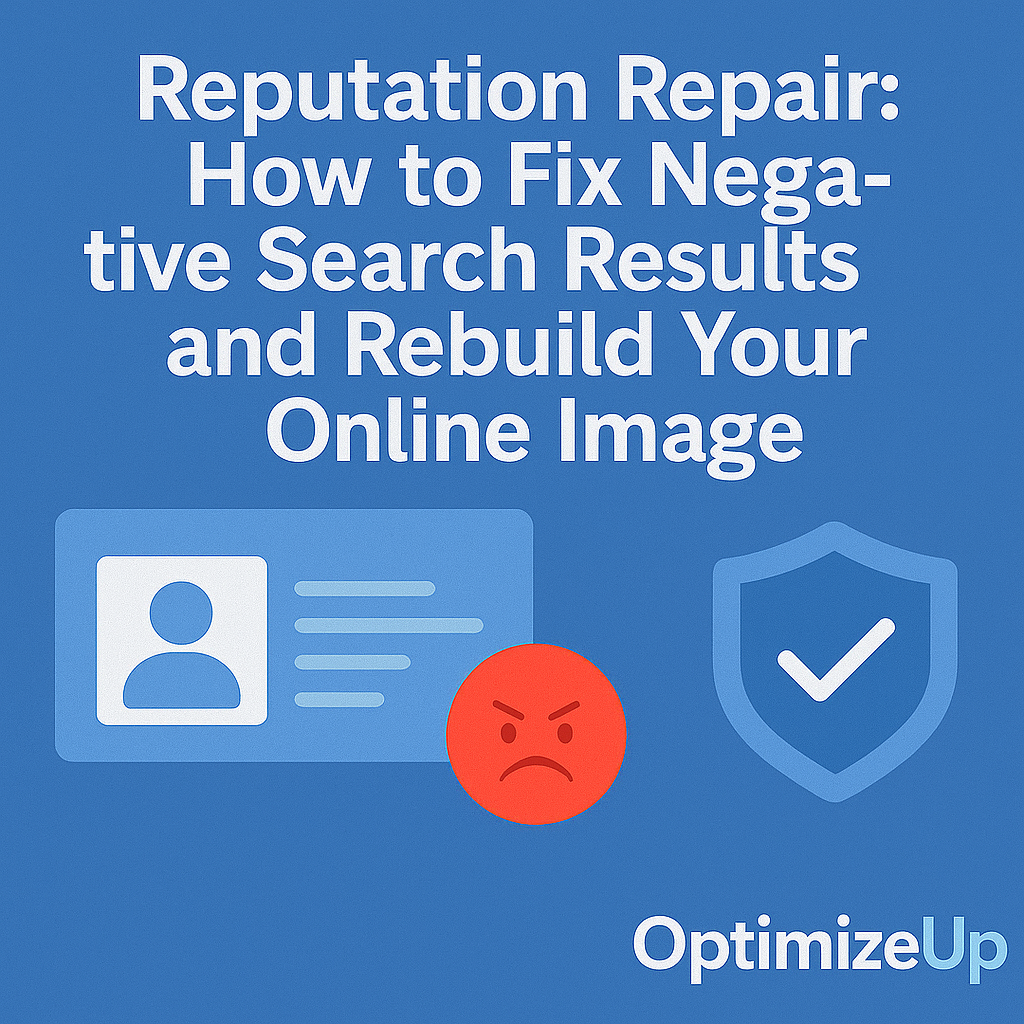In today’s search-driven world, your online image is one of the most valuable assets you own. Negative content that ranks highly in search engine results can cause long-term damage to your reputation, whether you’re an individual or a business. Reputation suppression is a proven strategy that doesn’t delete unwanted content but instead pushes it down in search rankings—making it less visible and less impactful.
This in-depth guide outlines advanced reputation suppression strategies, how they work, and what steps you can take to build a strong and resilient online presence.
What Is Reputation Suppression?
Reputation suppression refers to the practice of burying or demoting unwanted or harmful content in search engine results by outranking it with positive, authoritative content. The goal is not to remove the negative content (which may be impossible) but to reduce its visibility.
Why Suppression Works
Most users rarely scroll past the first page of search results. By creating and optimizing other positive content that outranks the negative, you can control the narrative around your brand or name.
Common types of harmful content include:
- Defamatory blog posts
- Unflattering news articles
- Ripoff reports
- Negative reviews
- Court records
Psychological Impact on Trust
A single negative article can lead potential clients to question your integrity or competency. Suppression mitigates this by placing more credible content front and center, reassuring your audience before doubts take root.
The Core Elements of Effective Suppression Campaigns
1. Content Development and Optimization
The heart of any suppression campaign is high-quality, keyword-optimized content. This content should reflect positively on your brand or name and be published on authoritative platforms.
Recommended formats:
- Press releases
- Guest blog posts
- Social media profiles
- Personal websites
- Company blogs
- YouTube videos
- Interviews with thought leaders
“Google loves fresh, relevant content. Make it work in your favor by feeding it content that showcases your strengths.”
2. Authority Building Through Link Signals
Content alone won’t rank without backlinks. Build backlinks to the positive content through:
- Social bookmarking
- Directory submissions
- Guest posting on relevant sites
- Link outreach campaigns
- Internal linking across owned properties
3. Owned Media vs. Earned Media
Owned media includes assets you control, such as your websites, blogs, and social profiles. Earned media includes third-party articles, mentions, or coverage.
You need both:
- Owned media gives you full control.
- Earned media boosts credibility and trust.
Step-by-Step Reputation Suppression Strategy
Step 1: Audit Your Online Presence
Begin with a comprehensive audit. Search for your name or brand in an incognito window and make note of:
- Negative URLs
- Position in search rankings
- The authority of the domains hosting them
Use tools like:
Step 2: Keyword Mapping
Determine the search queries most commonly associated with the negative content. Develop a plan to target these keywords with new content.
Step 3: Create a Publishing Calendar
Develop a 3-to-6-month content calendar including:
- Blog posts
- Videos
- Press releases
- Interviews or podcasts
Use keyword clusters around your name, brand, and industry.
Step 4: Distribute Widely
Publish to:
- Medium
- WordPress
- YouTube
- Crunchbase
- About.me
Cross-promote via:
- Quora
- Industry-specific forums
- Podcast directories
Step 5: Ongoing Monitoring
Set up alerts and tracking for brand mentions:
Track rankings and continuously adjust content strategies.
Best Practices for Long-Term Suppression Success
Be Consistent
A one-time push won’t work. You must consistently publish and promote new content.
Own Your First Page
Aim to control at least 7 out of the top 10 search results for your name or brand.
Don’t Neglect Local SEO
For businesses, local listings matter. Optimize Google Business, Yelp, and other review profiles.
Utilize Schema Markup
Add schema.org markup to your website and articles to help Google understand and rank your content more effectively.
Incorporate Multimedia
Google rewards rich media. Publish:
- Video testimonials
- Infographics
- Slideshows on SlideShare
- Audio interviews
- Press mention compilations
- Event coverage photos
What NOT to Do
- Do not buy links: Risk of penalties and deindexing
- Avoid spammy directories: These harm more than help
- Do not fake reviews: Violates platform policies and damages trust
- Avoid content spinning: Use original, value-driven content only
- Don’t engage with trolls: Responding can boost visibility of harmful posts
Tools and Platforms to Support Your Suppression Strategy
Content Platforms:
- WordPress
- Medium
- Substack
- Blogger
- Ghost
SEO & Monitoring Tools:
- Ahrefs
- Moz
- SEMrush
- Google Search Console
- Rank Math
- Screaming Frog
Outreach Tools:
- BuzzStream
- Pitchbox
- Mailshake
- Hunter.io
Hosting and CDN:
- Cloudflare
- SiteGround
- Bluehost
- WP Engine
Analytics Tools:
- Google Analytics
- Matomo
- Hotjar
Case Studies
Case Study 1: CEO Name Suppression
A tech CEO faced defamatory blog posts. Using a content-heavy suppression campaign that included 45 pieces across 6 platforms, they successfully pushed down all negative results within 8 months.
Case Study 2: Small Business Owner
A small local business had a negative Yelp review ranking #1. Through consistent Google Business optimization and press mentions, the Yelp link dropped to page 3 within 6 months.
Case Study 3: Political Candidate
A mayoral candidate had an outdated scandal article in the top 3. A mix of news interviews, volunteer blogs, and local forum posts displaced the article within 5 months.
Frequently Asked Questions (FAQ)
Not unless it violates policies (e.g., privacy, defamation). Suppression is the best option in most cases.
Typically 3 to 12 months depending on keyword competitiveness and domain authority.
Yes—as long as it promotes factual, value-driven content without deception.
It’s possible but time-consuming. Success requires SEO, content, and outreach expertise.
Yes, if low-quality tactics are used. That’s why expert guidance is recommended.
Suppression is effective for most types of search content, but some legal notices or government records may be especially difficult.
Use keyword and ranking data to determine which pages have the highest visibility and impact. Focus on those first.
Absolutely. Profiles on LinkedIn, Twitter, Facebook, and Instagram tend to rank high and are easy to optimize.
Yes. It involves legal, white-hat SEO and PR tactics.
Suppression pushes content down in rankings; removal eliminates it entirely, often requiring legal justification.





